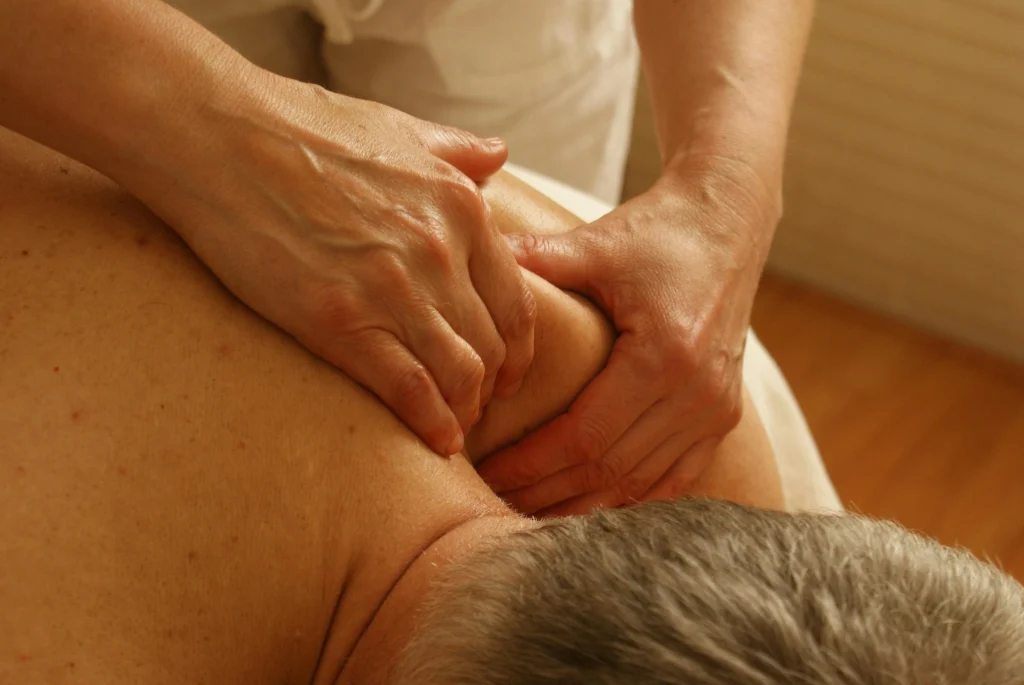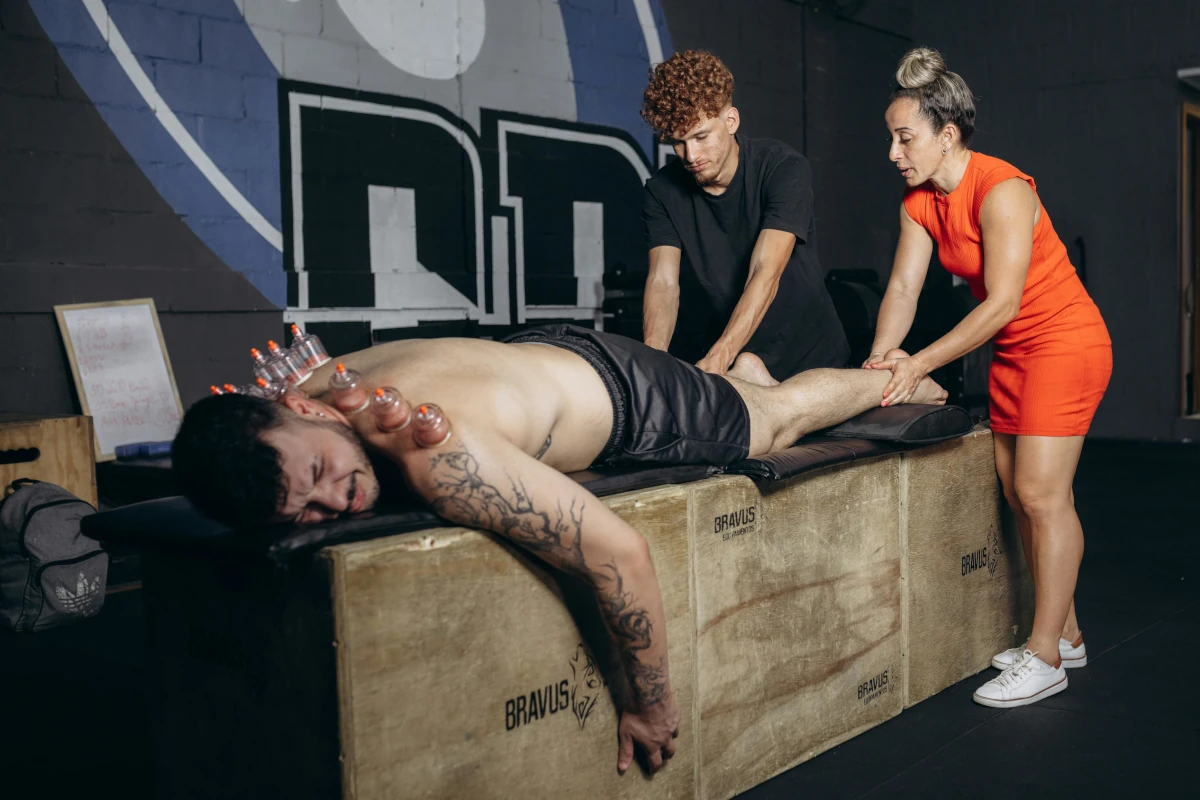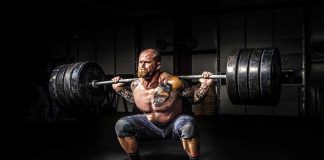Last Updated on July 9, 2023
A sports massage is a targeted, deep tissue massage specifically designed for individuals who are active or engaged in athletic training. Unlike typical relaxation massages, sports massage focuses on the musculoskeletal system and is tailored to help athletes manage or prevent injuries, recover from strenuous activities, and optimize physical performance.
Sports massage includes a variety of techniques—like deep tissue manipulation, stretching, trigger point therapy, and myofascial release—all aimed at increasing blood flow, reducing muscle tension, and improving flexibility. Unlike a typical spa massage, which is often gentle and aimed at relaxation, sports massage is generally deeper and more intense, with the primary goal of facilitating physical recovery and enhancing mobility.
Technique Diversity: How Sports MassageWorks
One of the defining features of sports massage is its variety of techniques. Since every athlete and activity is different, sports massage is a dynamic practice, adapting based on an individual’s specific needs and physical demands. Here are some of the most common techniques used in sports massage and how they benefit athletes and active individuals:
1. Deep Tissue Massage
- What it is: Deep tissue massage involves applying firm pressure to reach deeper layers of muscles and fascia (connective tissue). This technique is especially effective for addressing chronic muscle tension and breaking down scar tissue.
- Why it’s used: It helps relieve tightness, pain, and stiffness in muscles that are frequently engaged in repetitive movements. It’s often used on larger muscles, like the quadriceps, hamstrings, and back muscles, which are prone to tension.
2. Trigger Point Therapy
- What it is: Trigger points, or “knots,” are specific areas of tension in muscle tissue that can cause pain and discomfort. Trigger point therapy focuses on identifying and releasing these knots through direct pressure.
- Why it’s used: Trigger points can refer pain to other areas of the body, which is common among athletes. Trigger point therapy helps release these knots, relieving pain and improving muscle function.
3. Myofascial Release
- What it is: This technique involves stretching and loosening the fascia, which is a thin layer of connective tissue that surrounds muscles. Myofascial release helps to relax stiff muscles, reduce pain, and improve blood flow.
- Why it’s used: By targeting the fascia, myofascial release improves flexibility and mobility, which is essential for athletes who need a full range of motion for optimal performance.
4. Stretching Techniques
- What it is: Some incorporate stretching, including static, dynamic, and passive stretches. The therapist may stretch your limbs or guide you through stretches to enhance flexibility.
- Why it’s used: Stretching improves mobility, lengthens muscles, and can help reduce injury risk by promoting greater flexibility.
5. Effleurage and Petrissage
- What it is: Effleurage (light strokes) and petrissage (kneading) are commonly used at the beginning and end of sports massage. Effleurage warms up the muscles, while petrissage kneads the muscles to increase circulation.
- Why it’s used: These techniques promote blood flow and relaxation, allowing deeper work to be more effective and preparing the muscles for intense massage.
When Should You Get a Sports Massage?
Timing is essential when it comes to sports massage. Getting one at the right time can make a significant difference in your performance and recovery. Here are the primary scenarios when a sports massage can be most beneficial:
1. Pre-Event or Pre-Competition Massage
- Purpose: A pre-event massage aims to prepare the body for intense physical activity. It’s typically a short, lighter massage with the goal of stimulating blood flow, warming up the muscles, and reducing stiffness.
- Timing: It’s usually performed about 24-48 hours before an event to help increase circulation and reduce muscle stiffness.
- Benefits: Prepares muscles for the activity, minimizes stiffness, and helps to prevent cramps or injuries.
2. Post-Event or Post-Workout Massage
- Purpose: After a hard workout or event, muscles often feel sore and fatigued. A post-event sports massage is designed to help the body cool down, alleviate muscle soreness, and accelerate recovery.
- Timing: Ideally within a few hours to a day after the event, though it can still be beneficial for a few days post-activity.
- Benefits: Helps to flush out metabolic waste, reduces delayed onset muscle soreness (DOMS), and aids in muscle relaxation, which speeds up recovery.
3. During Training (Maintenance Massage)
- Purpose: Regular sports massages can be part of a training routine. Maintenance massages keep muscles loose, prevent injuries, and address any tight areas that might hinder performance.
- Timing: Maintenance massages are typically done weekly or bi-weekly, depending on training intensity.
- Benefits: Reduces the risk of chronic injuries, helps maintain muscle flexibility, and promotes faster recovery after workouts.
4. Injury Rehabilitation
- Purpose: Sports massage is also highly effective for injury rehabilitation. It can be used alongside other treatments, like physical therapy, to help an athlete recover from an injury.
- Timing: It’s performed once inflammation has decreased, usually as advised by a physical therapist or physician.
- Benefits: Promotes healing by increasing circulation to the injured area, reduces scar tissue formation, and helps restore range of motion.
Benefits of Sports Massage for Athletes
Sports massage offers a wide range of benefits, from enhancing performance to preventing injuries and aiding in mental well-being. Here are the key advantages that athletes and active individuals can gain from regular sports massages:
- Improved Blood Circulation
Sports massage increases blood flow to muscles, delivering essential nutrients and oxygen that aid in recovery and muscle function. Improved circulation helps clear out metabolic waste products, like lactic acid, which accumulate after intense physical activity. - Reduced Muscle Tension
During a workout, muscles contract repeatedly, which can lead to tightness and discomfort. Sports massage helps to release tension and reduce stiffness, allowing for better flexibility and overall muscle function. - Enhanced Flexibility and Range of Motion
Stretching and myofascial release techniques used in sports massage promote flexibility, helping athletes achieve a greater range of motion. Flexibility is crucial for avoiding injuries and improving performance. - Pain Relief and Injury Recovery
Sports massage can relieve pain and accelerate the healing process. By targeting trigger points and releasing muscle knots, sports massage reduces pain, improves function, and minimizes the likelihood of injuries reoccurring. - Reduced Risk of Injury
Regular sports massage keeps muscles loose and flexible, making them less prone to strains and tears. Injury prevention is especially beneficial for athletes who engage in repetitive movements, like runners or weightlifters. - Mental Relaxation and Reduced Stress
Sports massage isn’t just physical; it has mental benefits too. The relaxation from a massage helps to reduce stress and anxiety, improving focus and mental clarity. This mental boost can positively impact performance, especially for high-pressure competitions.
Preventive Benefits: Sports Massage as an Injury Prevention Tool
One of the most significant benefits of sports massage is its preventive role. Here’s how sports massage can be part of a preventive strategy to keep your body injury-free and at peak performance:
- Early Detection of Muscle Tightness: Regular sports massages allow therapists to detect any areas of tightness or imbalances before they turn into full-blown injuries. By addressing these issues early, you can reduce the risk of developing chronic pain or injury.
- Maintaining Muscle Balance: Tightness in one area of the body can create imbalances, leading to injuries. Sports massage helps maintain muscle balance by releasing tension in overused muscles, allowing underused muscles to remain active.
- Reduced Scar Tissue Formation: For those who have previously experienced an injury, sports massage can help reduce scar tissue build-up. Scar tissue can limit range of motion and increase the risk of re-injury, so preventing its formation is essential.
- Improved Recovery Between Workouts: Faster recovery times mean you can train more effectively and frequently. This can lead to consistent improvement in performance without putting excessive stress on the body.
Combining Sports Massage with Other Therapies
Sports massage can be even more effective when combined with other therapeutic techniques:
- Physical Therapy: Often recommended for those recovering from an injury, physical therapy combined with sports massage can improve range of motion and restore function.
- Chiropractic Care: Chiropractic adjustments paired with sports massage help maintain a balanced skeletal system, which supports optimal muscle function.
- Acupuncture: Acupuncture can complement sports massage by targeting pain relief and muscle relaxation, reducing stress, and promoting recovery.
Choosing the Right Type of Sports Massage for You
There isn’t a one-size-fits-all approach to sports massage. Based on your goals, you may prefer one type of massage over another. Here are some common approaches:
- Swedish Massage for Light Recovery: This is a lighter technique that focuses on overall relaxation and blood flow. It’s ideal for light recovery days or for those new to massage therapy.
- Deep Tissue Sports Massage for Intense Recovery: If you’re dealing with muscle stiffness or a recent injury, a deep tissue massage targets specific muscles for intense recovery.
- Active Release Therapy (ART) for Injury Management: ART is commonly used for injuries. It involves specific movements and pressures to release tissue adhesions, restoring movement.
Final Thoughts on Sports Massage
Sports massage is a valuable tool for athletes and active individuals at all levels. Whether you’re looking to recover faster, prevent injuries, or improve performance, incorporating sports massage into your routine can be a game-changer. By understanding when to get a sports massage, how it works, and what techniques are best suited for your needs, you can take an active role in optimizing your health and physical performance.

For best results, discuss your goals with your massage therapist, coach, or physician to find the best approach tailored to your needs. Regularly scheduling sports massages as part of your training and recovery plan can help you stay active, injury-free, and ready for whatever physical challenges come your way.
About the author:
by Korbin Newlyn. Listen to Korbin Newlyn as he shares his insights as an expert author and an avid writer in the field of health. If you would like to learn more go to Massage Therapy Degree advice and at Massage Bed information.







